2025
The Making of Habitable Planets and the Origin of Life!:
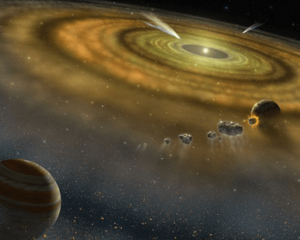
Register via our Google Form*
- $30 For General Public
- $25 For teachers, Friends of UCMP
- $15 for students
2020
Tracking megamammals in the late Quaternary: Fame, fate, and faunal extinctions
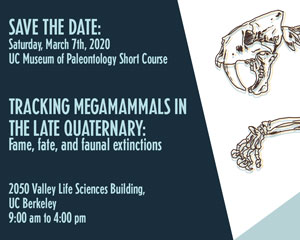
Hear from leading researchers on the diversity and disappearance of large land and marine mammals at the end of the last Ice Age. New methods of study are revealing patterns of extinction in the western US and throughout the Americas driven by rapid and significant ecological shifts over the last 100,000 years.
Sketch notes by Mark Simmons
2019
Whale watching through time: New insights into whale evolution, ecology, and adaptation
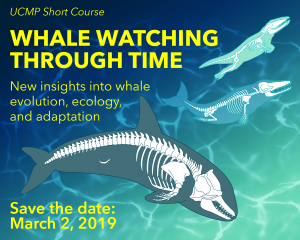
Whales have an evolutionary history stretching back more than 40 million years when primitive cetaceans first took to the sea. These marine mammals include the largest animals ever to have lived on Earth, making them the subject of both popular and scientific fascination. Research on modern whales’ size, morphology, migratory patterns, and sensory mechanisms continues to be informed by their fossil record, which also raises new questions about their unique adaptive and evolutionary transformations. Please join us to explore the latest research on whales from prominent biologists and paleontologists.
This short course is co-sponsored by the Berkeley Natural History Museums (BNHM) and Science@Cal.
NOTE: Parking is always a problem on and near the campus. We strongly recommend taking public transportation. If this is not possible, public parking in the campus vicinity is indicated on the UC Berkeley Parking and Transportation website.
Questions? Contact Lisa White.
2018
Where worlds collide: How microbes from Earth's deep biosphere and extreme environments can teach us about our planet's history and shape its future
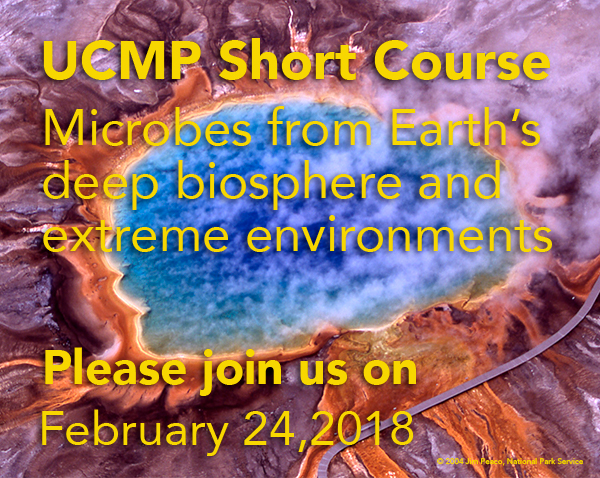
From the surface of the Earth to the deep ocean, bacteria and their extremophile relatives drive fundamental chemical reactions that transform the planet and sustain life. The biologists, geologist, chemists, and environmental scientists in the emerging field of geomicrobiology – the study of how microorganisms interact with earth materials and the environment — are revealing new information about the genetics and fascinating chemical processes of the microbes that inhabit Earth’s soil, rocks, water, and atmosphere. These investigations of modern life — for example at hydrothermal vents and shallow hotsprings – provide a window into Earth’s history, helping us understand the remains of ancient bacteria in stromatolites and other rocks. In the process, they provide clues to how life originated, evolved, and transformed our own and perhaps other planets. These investigations also point to new ways that bacteria can be used to decontaminate polluted environments. Please join us to explore these connections revealed by the latest research at the intersection of microbiology and geology.
This short course is co-sponsored by the Berkeley Natural History Museums (BNHM) and Science@Cal.
2017
A new look at old bones: Insights on dinosaur growth, development and diversity
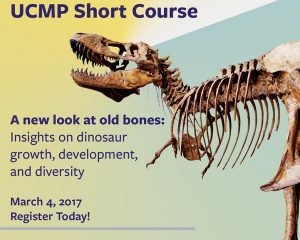
Dinosaurs are among the most successful group of vertebrate animals ever to walk on the planet. Their stunning morphological diversity and worldwide fossil record – coupled with their modern-day surviving lineage, the birds – continue to fascinate the student in all of us. Novel analytical tools and techniques allow paleontologists to probe, image, and decipher bone microstructure and preservation critical for testing previously held ideas on dinosaur growth and development. Recent dinosaur discoveries and research by our speakers are helping clarify evolutionary relationships and generate new and exciting questions on dinosaur growth and behavior. Please join us as our experts share their latest research and reveal changing perspectives on the evolution and paleobiology of dinosaurs.
This short course is co-sponsored by the Berkeley Natural History Museums (BNHM) and Science@Cal.
NOTE: Parking is always a problem on and near the campus. We strongly recommend taking public transportation. If this is not possible, public parking in the campus vicinity is indicated on this two-page pdf.